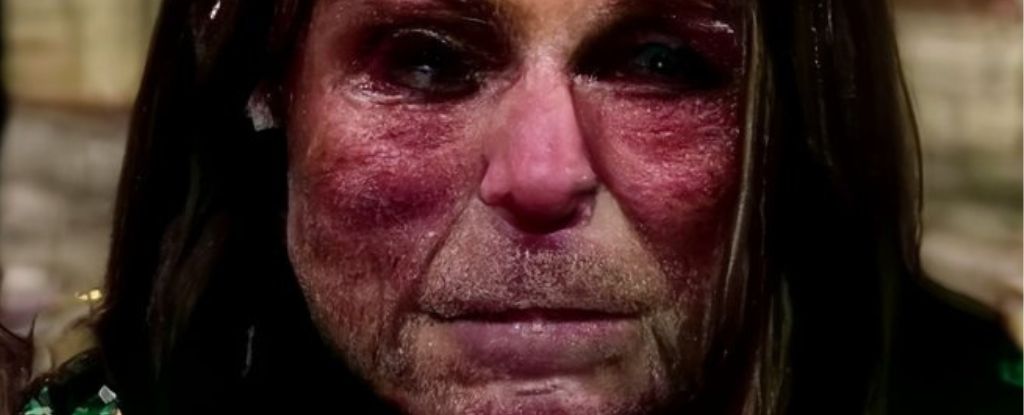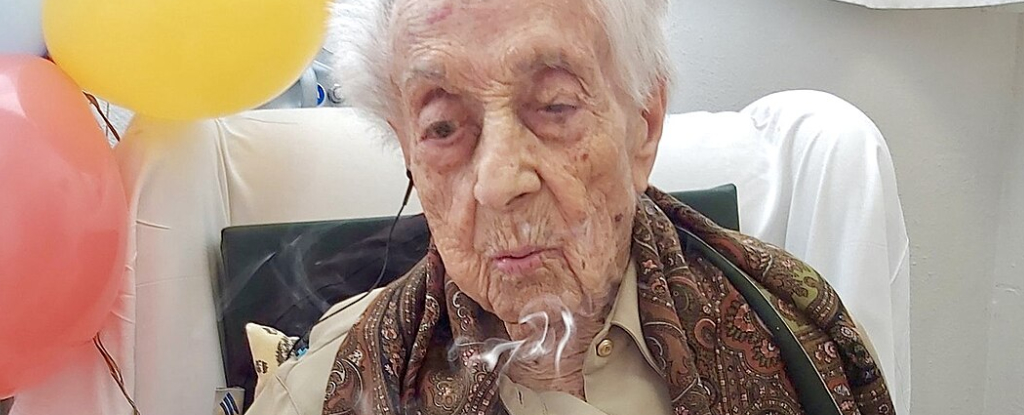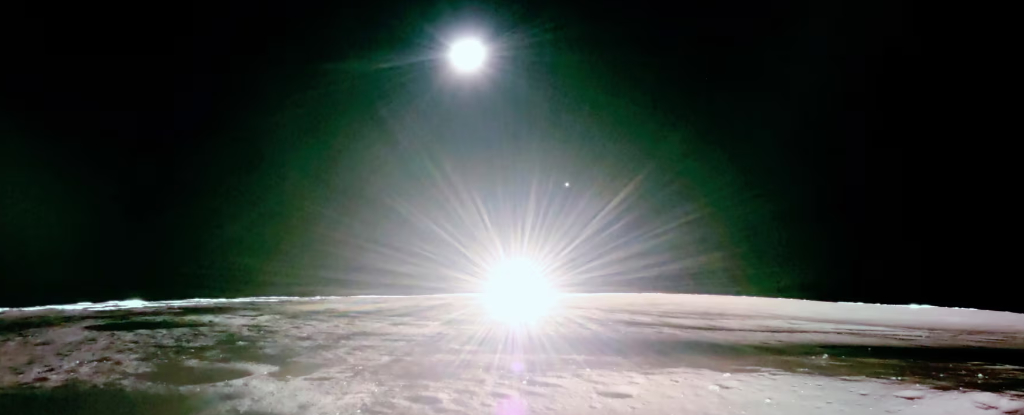She’s out there somewhere, lurking in a parallel universe of possibilities. All you have to do to bring them to life is type the right prompt into an AI image generator.
Like a digital incantation, the words reveal the eerie face of a middle-aged woman with dead eyes, a blank stare, and a disturbing grimace.
Her name is Loab (pronounced like “Lobe”), and she was discovered by a Sweden-based artist named “Discovered”. supercomposite on twitter.
Supercomposite is among the first modern developers to explore the realms of text-to-image AI generators. This year we’re experimenting with negative prompts (which ask machine learning Algorithms to find the extreme opposite of something), the artist stumbled across a creepy face.
When Supercomposite ran the prompt again, they said the same woman came back, this time alongside the word “loab.”
“The AI reproduced them more easily than most celebrities. Her presence is persistent and she haunts every image she touches,” supercomposite wrote on Twitter in a September 2022 thread about Loab’s discovery.
“Have a seat. This is a true horror story, and it hits the macabre sharply.”
With a catch like this, it’s no wonder Loab took the internet by storm. The image of this mysterious woman is now so well known that she even has her own Wikipedia page.
🧵: I discovered this woman I call Loab in April. The AI reproduced them more easily than most celebrities. Her presence is persistent and she haunts every image she touches. CW: Have a seat. This is a true horror story and turns sharply macabre. pic.twitter.com/gmUlf6mZtk
— Supercomposite (@supercomposite) September 6, 2022
Part of Loab’s mystery is what she portrays. Loab’s character has become a kind of modern ‘tronie‘ – a kind of art form from the Dutch Golden Age that exaggerates the expression of a face – one of does not represent a person, but an idea.
Loab’s allegory is just a little scarier than, saythe subject of the better-known tronie entitled The girl with the pearl earring. More specifically, it wasn’t made by a human artist who can tell us more about the idea they were trying to portray.
Among the hundreds of Loab iterations that Supercomposite has launched offer many features dismembered or screaming children in the background. Some AI-generated images were so grotesque that the artist decided not to share them publicly.
“I tore Loab apart and put it back together. It’s an emerging island in latent space that we don’t know how to locate with text queries.” writes the artist on Twitter.
“Sooner or later she finds everyone. You just have to know where to look,” Supercomposite adds.
Even if her red cheeks or other significant features disappear, the “loabness” of the images she is a part of is undeniable. She tracks the images, persists through generations, and overwhelms other parts of the prompt because the AI tunes in to her face so easily. pic.twitter.com/4M7ECWlQRE
— Supercomposite (@supercomposite) September 6, 2022
Loab hasn’t caught the world’s attention just for her nightmarish qualities. Brought out of the abyss by what supercomposite calls an “Emerging Statistical Accident”the sinister woman represents a new era of creativity that we may or may not be ready for.
Brendan Murphy, a photographer and digital media lecturer at Central Queensland University in Australia, spends much of his free time thinking about the future of AI and testing image and text generators.
With technology exploding lately, he believes the art world is heading for a paradigm shift similar to that seen in the early 18th century when photography entered the scene.
Today, when Murphy uses AI to make art, he thinks of it like landscape photography, wandering around a place looking for interesting things to capture. Only in this case the landscape he explores is a kind of parallel universe of human art.
Finally, AI generators are trained on human knowledge, culture, and art traditions, meaning we could have made anything they create plausible.
These unrealized opportunities are now available to the folks out there, and Murphy and Supercomposite are among the first to join the hunt.
“There are things that interest you, that you really want to amplify and that you really want to go in that direction,” Murphy told ScienceAlert.
“There is no reason to go down these paths. And there are probably really good reasons why people have never walked these paths. Because it’s probably never going to impress anyone or sell anything.”
This does not mean that using AI to create art is frivolous. Instead, Murphy says AI is a tool that artists can use to advance their artistic practices. And every now and then a precious figure like Loab emerges from the abyss.
“I think what’s special about Loab is that it’s a great story. It’s not just about the technology. It’s about what drives the technology. It’s about looking at the possibilities of the technology,” he explains.
“And I think that’s great. I think this is a valid work of art. Much more valid than just taking a specific AI picture. There is a lot of thought, a lot of experimentation, a lot of iteration.”
Anne Ploin, a digital sociologist at the Oxford Internet Institute who studies the potential impact of machine learning on creative work, shares a similar view.
“AI models can extrapolate in unexpected ways [and] Calling attention to a totally unknown factor in a particular style of painting”, Ploin says.
“But machine learning models are not autonomous. They will not create new artistic movements of their own accord.”
Murphy and other art experts think It’s doubtful that AI will wipe out human creativity, at least not entirely. After all, art only exists when humans appreciate it, and as a species we tend to be quite biased about our abilities.
In the future, AI-generated artworks may prompt us to question artistic traditions and explore our emotional responses to images, says Murphy.
But we are entering a world where many writing and painting services could may become superfluousthereby wiping out the jobs of many ghostwriters, illustrators, designers and photographers.
The explosion of AI-generated art in recent months has raised concerns that algorithms are ripping off artists by replicating their distinct styles.
The best human artists will no doubt continue to compete with AI, and Murphy suspects that those creators who rely on their humanity will find the greatest success in the future.
A public face and identity that is tangible and real may be more important than ever for artists. “Regardless of how apps like Lensa are disrupting the way art is made, the personality of the artist remains an important context for their work,” says Murphy recently wrote in The Conversation.
ChatGPT is an AI-based text generator released in November 2022. Its name stands for Chat Generative Pre-trained Transformer, with an engine based on evaluating the likelihood that certain words will follow each other in a block of text, similar to a compressor version of your phone’s text recognition feature.
As with Loab, there seems to be a ghostly presence in the program’s responses, testing the limits of human knowledge and creativity. Although it doesn’t take much that the veneer falls off, exposing its wiring as a dice-rolling “parrot” hoping to produce the correct word sequences to fool us.
Any wisdom it offers is left for us to pick apart and judge. When asked how AI is changing art, ChatGPT Murphy agrees:
” Artificial intelligence is changing the way art is created, perceived and experienced. AI algorithms can be used to create novel art forms such as music, poetry and visual arts. These algorithms can also be used to analyze and interpret existing artworks in new and interesting ways. In addition, AI technology will be used to create interactive art installations and performances that can react and interact with viewers in real time. Overall, AI enables artists to create and explore new forms of expression, and audiences to experience art in new and exciting ways.”
The boundaries of artistic practice are expanding, and Loab is just the beginning.





